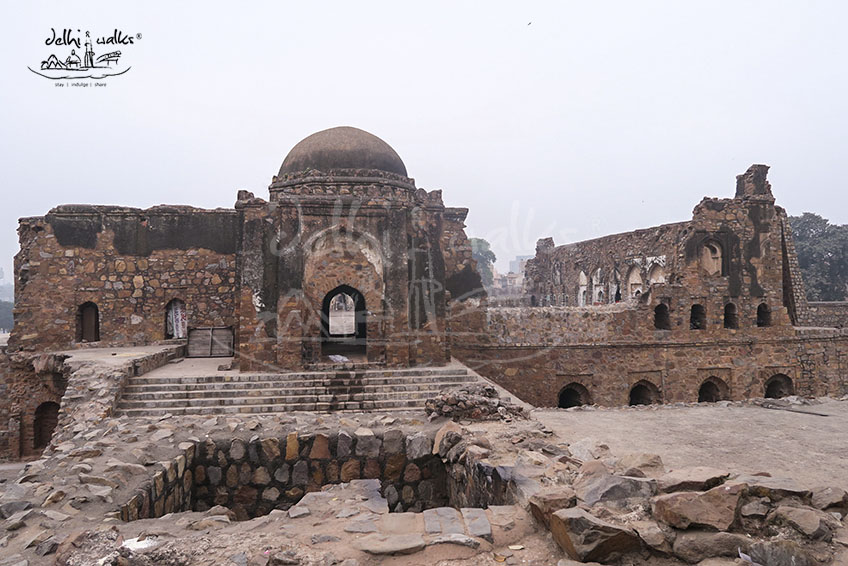The Abode of Djinns
Djinns are a part and parcel of Delhi life. They are the spirits tending to the faithful seeking help. On Thursdays, the Djinns are busy when thousands turn up with various concerned letters for them.
Imagine a newly built city, oddly 650 years back on a Friday, bustling with people, arriving from the main western gateway with bastions on either side. Right from there, they would enter one of the two smaller gates into the palace interiors, with the exotic Tas-i-Ghariyal playing in the background to announce the time of the day. From the smaller gates, meandering through the garden of grapes, to Ashokan Pillar on left and the imposing Jami Masjid on the right, the new city used to be a favorite place for pleasure trips for people. With a variety of transport options available, the entrance of the citadels from the western side led to a waiting hall flanked by dual gates. Single storied guard rooms lined at the entrance interiors.
Welcome to the fort city of Feroz Shah Kotla, built by Sultan Feroz Shah Tughlaq in the 14th century which is between a famous cricket stadium and Delhi’s Ring Road. In the stonewalls of the city, believers of 21st century still stick their letters to the Djinns, light candles and diyas and the believers pray.
Every Thursday, people from various corners of Delhi come with their prayers and letters, with a belief that they would be heard and solved by the Djinns. I happened to meet a lady, a mother of five young children, who had come with photocopies of her letters.
The new city complex of 14th century, there were three palaces which were exotically named as The palace of grapes (Mahal-i-angur) for the Maliks and Amirs; Mahal-i-chajja-i-chobin for personal attendants and; Mahal-i-bar-I ‘amm or the palace of public court for the public. Now all these lie in ruins as they indistinguishable from any other ruins. The Jami Masjid had cloisters four in number, in a rectangle, is a small domed roofs which are supported on 260 stone columns which have 16 feet high, having a 25 feet high central octagonal dome, which contained the Emperors ordinances.
The circular Baoli was the king’s personal swimming pool which had considerable ornamentation. The water conveyed from two overhead water tanks were surmounted with chattris. With the ruins of Jama Masjid, the 42 feet and 7 inches high pale pinkish tapering Ashokan Pillar, and the Sultans most ambitious construction project, it is a sight to watch and retell the story with the same vigour.



